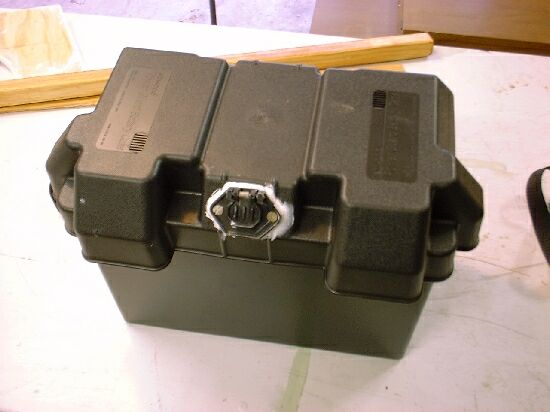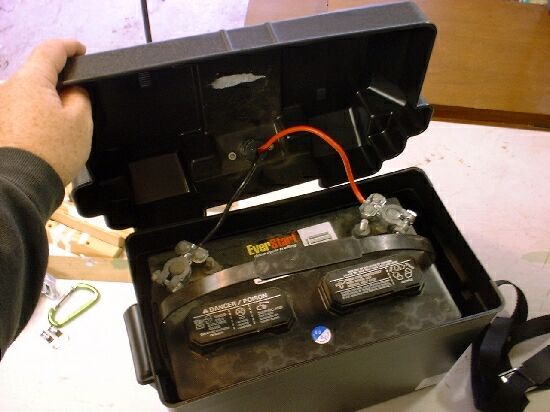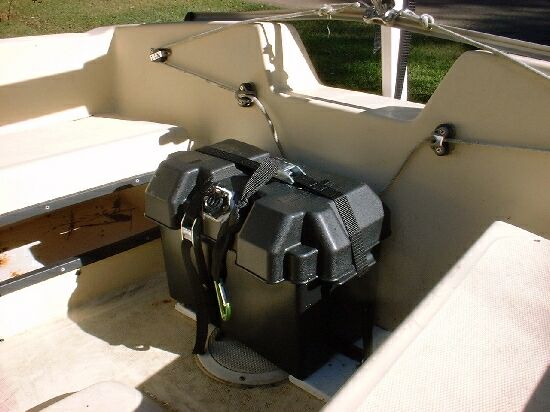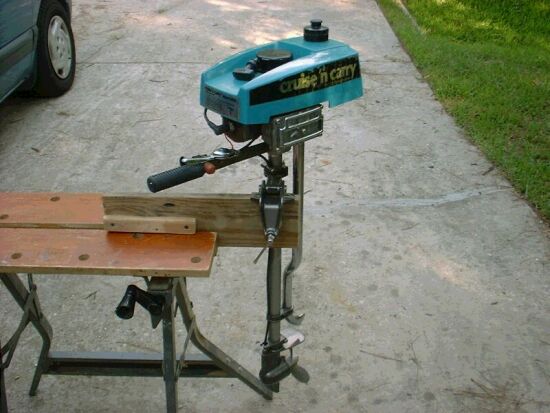Batteries and Trolling Motors
Article By Shorty Email post from to the pdracer Group:
Email post from to the pdracer Group:I know I could ask the kid at the store, but why when I have access to the best user group in the world?
I have been playing with my 2 stroke, 2hp outboard, which pushes a PD Racer along quite nicely, and I am going to switch to an electric. Too much noise, too much smoke, and it just ain't my style.
So what all do I need to buy when I get somehting like a Minn Kota trolling motor? From the box, it looks like you get the motor assembly, but no battery, cables, recharger, etc.
I really only want it for manuvering at the dock. I came in kinda hot last time under sail, and I got a bunch of stink-eye from the motor-boaters.
So if anyone has one of these, I'd like to know all the bits it takes to own one.
Trolling Motor and Battery Answer:
For your newport 16, you need a 50 lb thrust motor. If you get a 30, it won't go it into a breeze, and forget about either going into the wind.
The toughest part of the trolling motor life is to keep your battery in good condition. You will need to get a "deep cycle" battery, they can be heavily discharged. If you use a regular car battery, you will destroy it pretty quickly. The trolling motor itself has almost no maintenance, you just plug it in and go.
The Minn Kota endura 50 that I had, was a 41 amp motor, and I had a 120 amp hour battery. Many people suggest only draining a battery half way, so that is 60 usable amp hours / 41 = 1.46 hours usefull run time. I was sure this advice didn't apply to me, so I would run about 75%-100% of the juice out, and quickly wrecked a battery (it wouldn't hold a charge anymore).

Here are some general trolling motor battery tips:
- Keep idle batteries fully charged. Leaving a battery even partially discharged leads to sulfation and loss of capacity.
- Check the water level regularly. Top up as necessary to keep the level about 1/4” above the plates.
- Use only distilled water for topping up; trace minerals and/or chlorine in tap water really do shorten battery life.
- Fill cells after charging. If you fill them before, expansion during charging will pump electrolyte out on top of the battery, causing a corrosive mess and reducing the acid level inside the battery.
- Keep the top of the case clean and dry. Dampness, dirt, and acid on the battery case can create a circuit between the terminals that will drain the battery.
- Keep terminals and cable clamps corrosion-free. Use a wire brush to remove corrosion. Coat both terminal and clamp with petroleum jelly (not grease) to prevent future corrosion.
- A 12 volt battery will read about 12.7 VDC when charged and is flat when the voltage drops to about 10.7 VDC.

Afraid that my kids would lean across the terminals, I made a battery box to hold the battery with a quick connector on the surface. Later I saw a professional version of this for sale that included a volt meter in the lid for checking battery state. Also I made a mount to go in the stern of my Newport 17 - it had a small piece of plywood with a strap permanently mounte there thru a couple of pad eyes. It was just perfect for holding the battery box, and kept it from sliding around.
Charging With Solar Panel:
I kept a solar panel from a previous boat trade, it is a United Solar Systems Uni-solar MBC-131 5.5 peak watts, 15.6 peak voltage, .35 peak amp, 1.5 lbs, 8" x 27", $115 regular retail price. It is a common solar panel that I see on sailboats, often mounded on the cabin roof or bungeed to the boom. Don Casey says you can expect 5 hours at peak wattage per sunny day - so 5.5watt / 12 volts = .45 amp x 5 hours per day = 2.25 amp per day that solar panel will charge battery (if it is a sunny day). My Endura 50 would soak up 41 amps per hour, so the solar panel would give me a whopping 3 minutes of run time, if I let it charge an entire day.
Have you seen the little solar panels that sits on the dash of a car, and charges it's battery thru the cigarette lighter? I have seen these on boats with the expectation that they would recharge the battery for the trolling motor -- well, those little chargers only generate about a half of a watt, so I am not sure they will even keep up with a battery's natural discharge.

I have since given up the trolling motor, I was aggrevated with not knowing how much energy was left in the battery. I ran out of juice a number of times when I was expecting it to last longer, and for the weight I was carrying around (mostly the battery), it had a short run time. If you carry the same amount of weight in a gas outboard with gasoline, you will have a lot more run time and power. Also just seems to be a middle point compromise that I didn't want to hassle with. I either use a regular gas outboard, or a set of oars. You can learn to sail to and from just about any dock, so the only thing I use an auxiliary for is when the wind dies, or to convert my sailboat into a motor boat (and using it like a motorboat).

One big problem with using really small outboards, is you don't usually need a full gallon of gas. A couple of quarts will usually suffice. The plastic gas cans also tend to leak if knocked over. What I do is use a very small outboard with a small non-spilling fuel bottle. A 1.5hp cruise and carry outboard only weighs 11 lbs, and you can get an aluminum camp stove fuel bottle that is legal to carry gas around in. I started off carrying around fuel in used oil bottles (they are legal to carry gas in), but the bottles were so thin that they would expand and contract with the temperature change. Sometimes looking like a little balloon, sometimes looking like they were a submarine heading for the bottom and about to be crushed at depth.
Yes, outboards are noisy, and aren't very powerful, but they push more than the trolling motor, and you know how much energy is left by checking how much fuel you have. For carrying home in the car, you can make a simple tray that you lay the motor down in, so if it leaks, the oil and gas gets caught in the tray instead of the carpet in your trunk. Or see my essay on transporting outboards.